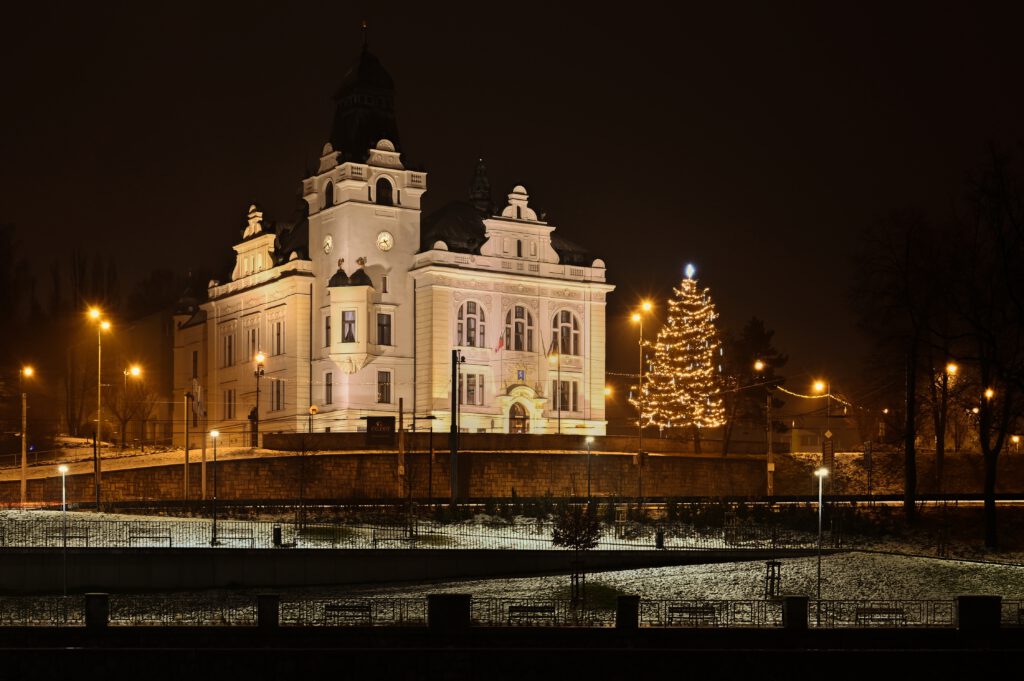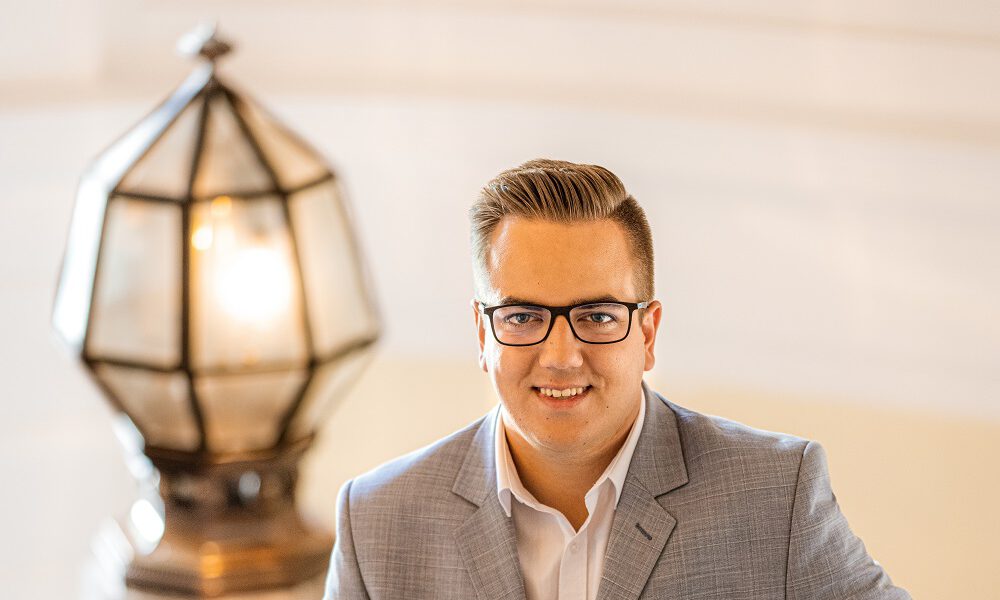Richard Vereš worked in the largest Czechoslovak law fi rm, where he dealt with public procurement and administrative law. He is furthering his legal education and is preparing to study international relations. He is interested in the digitalisation of public administration and is active in the expert committees of the Union of Towns nd Municipalities of the Czech Republic and international organisations. He is one of the youngest mayors in the country and was nominated as a fi nalist in the Manager of the Year 2020 competition.
You are a lawyer with experience at a large law firm. Is the municipal district management more about running the municipal authority or dealing with citizens?
Many people think of working at the municipal authority as mainly visible ceremonial and offi cial duties. Indeed, that is part of it. But the bulk of the work is still operational matters, managing individual projects, internal and external communications, and managing the organisation as a whole. Today, our office employs almost 250 people, manages about 600 million Czech crowns a year and also manages nine contributory organisations in education and social services. Therefore, the management of a municipal district resembles that of a medium-sized enterprise in many ways.
At the same time, this work has many specifi cs. The main one is probably the presence of many different aspects. You are not always in the same boat with your colleagues. You have to find compromises and explain and communicate your decisions more. The experience of a large law firm comes in handy in this respect. One thinks differently, brings a fresh perspective to the offi ce and can make many processes significantly more efficient.
You were nominated as a finalist in the Manager of the Year 2020 competition. What did this nomination mean to you?
It is, above all, an appreciation of the work done. Not only mine but also that of the entire team we have managed to build at the office. At the same time, the competition offers an opportunity to get feedback, compare ourselves with
managers from across disciplines and share our experience with them. Last but not least, it is definitely a motivation. In our municipal authority, we try not to do the mandatory minimum required by various regulations but always go the extra mile. The fact that someone notices this and appreciates it is undoubtedly an encouragement to continue this approach.

Is Silesian Ostrava just a part of Ostrava as a whole, or do you have your own priorities? If so, what are those priorities?
Of course, Silesian Ostrava is part of Ostrava as a whole, which undoubtedly brings it many positive things. Few Czech cities provide such quality services as Ostrava. At the same time, however, we are a municipality of our own. After all, Silesian Ostrava is historically the oldest part of Ostrava, the first mention of it being 50 years older than the Moravian part. So we have a number of our priorities that we are addressing.
Three years ago, when I ran for office, I had three main slogans — a welcoming municipal authority, a safer urban district and aff ordable housing. I consider the first point to be completely fulfilled, and I dare say that at least in the Moravian-Silesian Region, we have no competition in the level of transparency of the office, the level of communication and the accessibility of services for citizens. In the area of security, we have also been relatively successful — three of the six socially excluded localities have gradually disappeared, and we are working with other problematic localities. The CCTV system is being signifi cantly expanded. And in the area of affordable housing, we are also seeing significant progress — we are reconstructing dozens of municipal apartment buildings, reducing the number of vacant and uninhabitable flats, and expanding the supply of housing for seniors and students.
We are currently focusing on other areas as well. The most important is the work with urban units such as Zámostí in Silesia and Ostrava. We have prepared a project for a new multifunctional building with a large cultural hall. A new sports hall has also been granted a building permit. But it is also important for us to repair existing buildings that have often been dilapidated for decades — apart from apartment buildings, these are, for example, community centres, fi re stations or schools. The comprehensive reconstruction and extension of one of the former school buildings has also led to the construction of a new home for the elderly, which should welcome its fi rst clients in May.
You deal with business owners and managers. Is Silesian Ostrava a good place to live and do business?
The uniqueness of our urban district lies in the many opportunities it offers. We occupy more than a fifth of the area of Ostrava, making us its largest district. When it comes to housing, you will find housing estates, urban block housing and residential areas with houses. Entrepreneurs can find many brownfields in former underground mines and many opportunities for development in the service sector. At the same time, we are surrounded by nature. In our district is the Ostrava Zoo, the famous Heřmanice Pond, the Koblov lake system and the famous smouldering Ema Heap. In short, there is something for everyone in Silesia.
Thank you for the interview.




